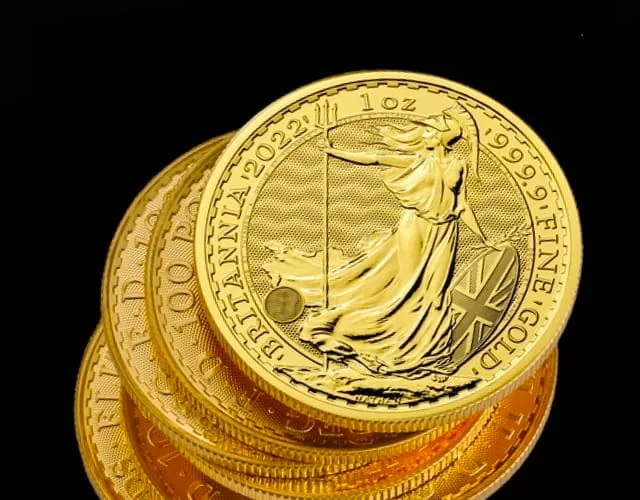The gold price has risen 16% in the last three months and over 60% in the last five years, attracting many new investors who want to protect their assets from volatile markets. But inexperienced buyers are being duped into forking out significantly more for so-called “graded” coins by unscrupulous dealers making overinflated claims about their true value and desirability. In reality, these bullion coins are valued mainly for their tax status and metal content and not their collectability or exceptional condition. When the time comes to sell you are unlikely to realise a higher price than for a similar coin that hasn’t been “graded”. So how can you avoid paying over the odds for your gold?
What are graded bullion coins?
The Royal Mint make thousands of gold coins every year to satisfy demand in the bullion and collectible (numismatic) markets. The difference between these two markets determines how the value of your investment is related to the current price of gold.
Most of these recently-minted gold coins are valued on their metal content, not their perfection (or grade). In fact, most aren’t independently graded at all. Royal Mint-minted coins are already investment-grade gold, meaning the gold is 99.99% pure. The price of these coins is therefore linked directly to the current gold price.
A recent trend has been for certain dealers to start including the physical condition of the coin into their sales pitch in an attempt to charge a higher price. This is where “grading” comes in. The gold bullion market is highly competitive and aggressively promoting “graded” coins can bring in significant profit to the dealer, especially when selling to inexperienced investors.
So, what do you pay for? – Premiums.
A gold coin premium is the amount you pay above the spot price (or current market price) of gold when purchasing a gold coin, and it covers the extra costs associated with making, distributing, and selling the coin. Premiums vary based on several factors, including the type of coin, demand, and market conditions.
The premiums on bullion coins cover the cost of refining, minting and striking the coin, as well as the design and labour involved in producing the coin. There are also dealer costs which cover the sale and distribution of the coin.
Sometimes bullion premiums can increase when demand is high and supply is constrained. This doesn’t mean the coin itself is particularly rare, just that many people are buying them and they are harder to get hold of. Premiums are also higher on coins of smaller denominations (like half or quarter sovereigns or Britannias), because there is still the same cost associated with a coin that is worth less than its heavier counterparts.
“Numismatic” coin premiums can be substantially higher than bullion premiums because collectors will pay for genuinely rare coins or those with historical significance. Coin collectors are usually very knowledgeable about the market and understand the basis on which the premiums are determined.
Discover Gold’s Unique Tax Advantage
Most investments are subject to some form of taxation, but physical gold can be totally free of VAT and capital gains tax.

Why was grading originally invented?
Collectible coins have long been graded to ensure trust and transparency, especially when selling or buying. There is no subjective judgement or opinion with an independently verified and graded coin, so the buyer knows exactly what they are getting.
Grading is very important for numismatic coins because they are valued for their historical significance, rarity, and aesthetic appeal rather than just their metal content. Precise grading helps buyers and sellers establish the coin’s worth more accurately.
The grading scale ranges from 1 to 70 with 1 being a heavily worn, barely identifiable coin to a flawless 70. There are several companies that professionally grade coins, including the Professional Coin Grading Service (PCGS) and the Numismatic Guaranty Company (NGC). Once a coin has been graded it is sealed in a tamper proof holder which includes details of the certification.
Do common bullion coins need to be graded?
In a word, ‘no’, especially if they are recently minted. Grading could feasibly add a small value to a bullion coin because it provides objective certainty about the coins condition. But we have heard of dealers charging almost double for their “graded” bullion coins and that is a lot of money to try and recoup through future growth. Unscrupulous dealers may pressure buyers into choosing “graded” coins at inflated prices with the promise of greater value growth than an ungraded bullion coin, but the likelihood that the buyer could then sell that coin with a similar premium is low.
Reasearch what you are buying before you buy
Investors looking to own physical gold because the metal is a safe-haven asset, and will likely appreciate over time, want to pay the lowest price for their investment-grade gold, and they don’t need the additional costs of a graded coin. Understanding the different types of gold investment is the first step to buying the right coin for you. Do your research and don’t get pressured into paying more than you need to for standard bullion coins.
